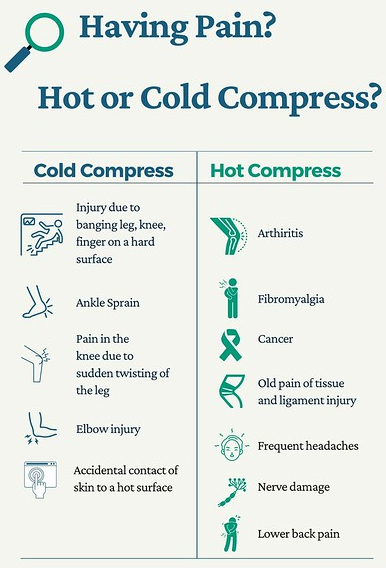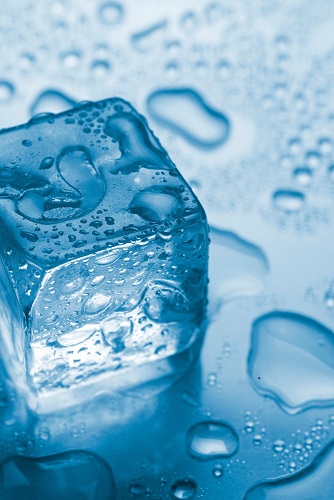When it comes to treating injuries or alleviating pain, heat and ice serve different purposes. Read on to find out when to use ice and when to use heat.
Addressing Pain With Ice and Heat
Using the incorrect type of therapy can negatively affect your recovery process following an injury. It can also cause your pain level to increase. Therefore, knowing which type of therapy to use is vital to finding relief.
When To Use Ice
Use ice therapy (i.e., cryotherapy) on an acute injury (i.e., a new injury). With an acute injury, the sooner cryotherapy begins, the better. Placing ice on the area causes the blood vessels to constrict, which helps decrease blood flow to the area. Therefore, using cryotherapy on a muscle strain helps reduce inflammation. In addition, it decreases pain by numbing the area. By applying ice right away, you decrease your likelihood of experiencing long-term inflammation. In addition, quickly reducing inflammation can decrease the amount of time you need to recover.
Reasons to use an ice treatment:
- To relieve headaches and migraines, place a cold wrap over your forehead, eyes and, temples.
- A cold whirlpool will allow you to submerge larger parts of your body (e.g., the lower back).
- Ice and gel packs are ideal for treating nearly any injury. Click here to learn how you can create your own gel ice pack.
How To Use Ice on an Injury
For the initial 72 hours following an injury, you can apply ice for 10 minutes every hour. After the 10 minutes, remove the ice and return it to the freezer. To prevent skin damage, remember to place a cloth in between your skin and the ice. After the initial 72 hours, you can begin applying ice to your injury for 20 minutes, every two hours. Continue this pattern as needed.
The timeline for icing depends specifically on the needs of the individual who sustained the injury. For example, an athlete may decide to use ice therapy after practice and after each game to ease soreness.
When To Use Heat
Heat therapy (i.e., thermotherapy) should never be used for an acute injury. Applying heat to an injury directly after it happens could lead to further damage. Therefore, doctors recommend avoiding the use of heat until 72 hours have passed.
Heat increases blood flow to a previously injured or sore muscle, it raises metabolic activity in the area. This loosens the tissue, which helps the muscle relax. People who are physically active can avoid stiffness by regularly using heat before they participate in activities.
Types of thermotherapy:
- Moist heat, which is also referred to as superficial heat, can help relieve pain, relax muscles, and increase your range of motion. The benefit of superficial heat over dry heat is that it penetrates the tissues quicker. To learn how you can make your own DIY moist heat pack, click here.
- A heat wrap can help reduce muscle spasms. For example, someone who has a migraine or headache resulting from muscle spasms can place a heat wrap around their neck to help the muscles relax.
- There are dry heating pads and heating pads that have moist heat capabilities.
- A warm shower, a bath, or a heated whirlpool can all provide relief.
Heat Can Help Relieve Chronic Pain
Apply heat to the target area for 15 to 20 minutes. You can use thermotherapy up to three times a day.
As long as these therapies are used correctly, ice and heat can be highly beneficial when dealing with an injury, muscle spasms or preparing for physical activity.
Disclaimer: Always speak with your physician before trying any new therapy.
Sources:


